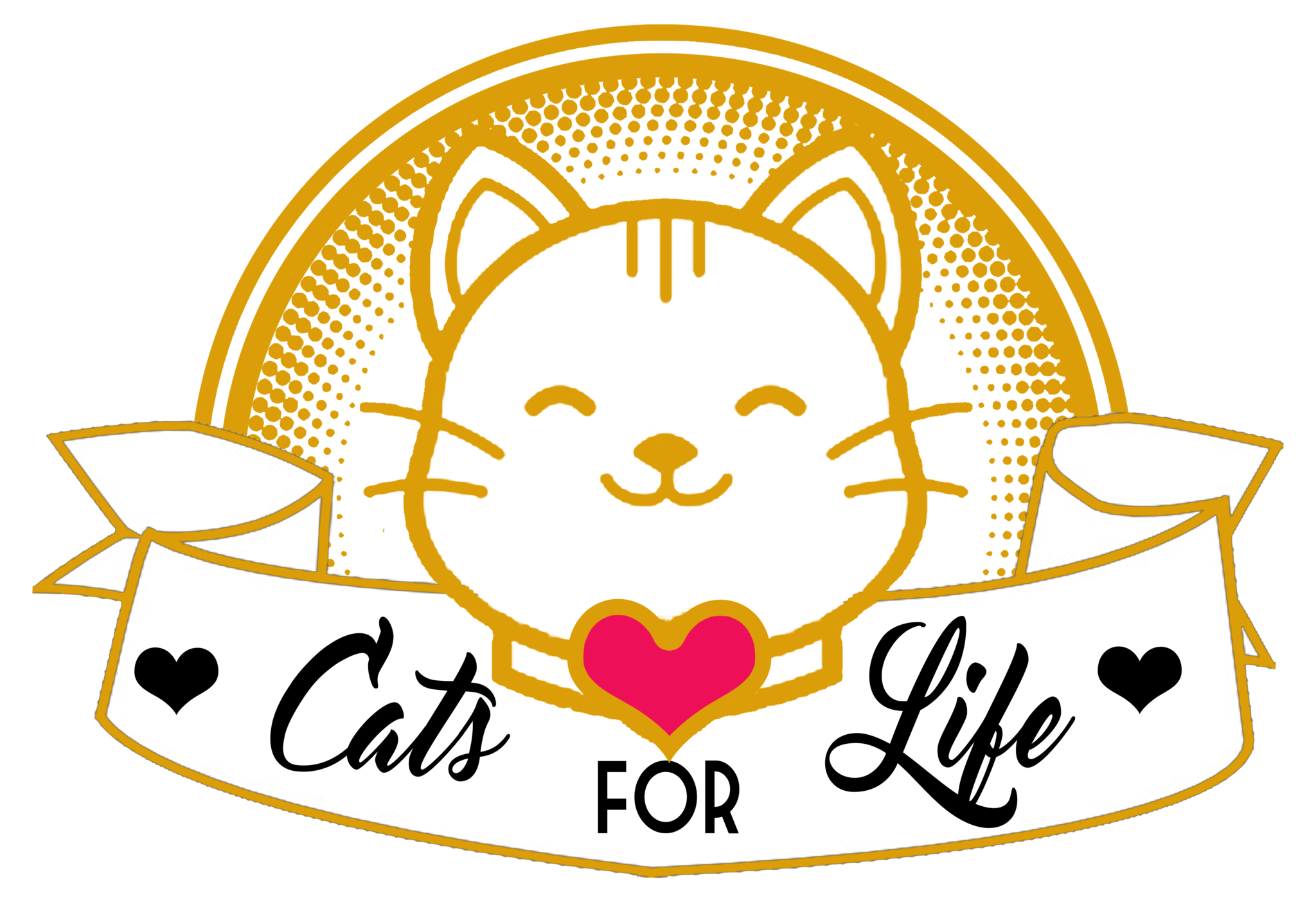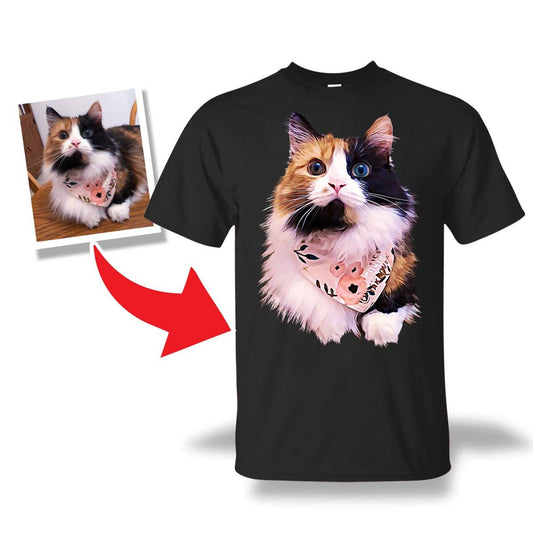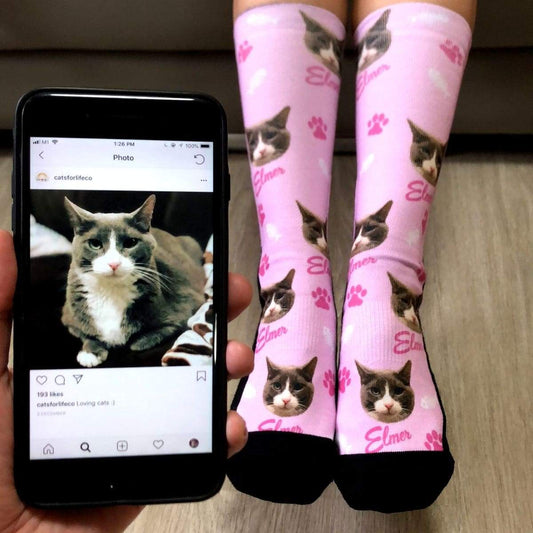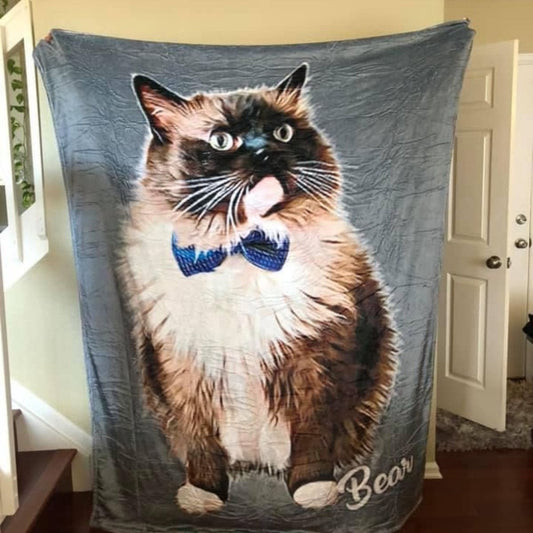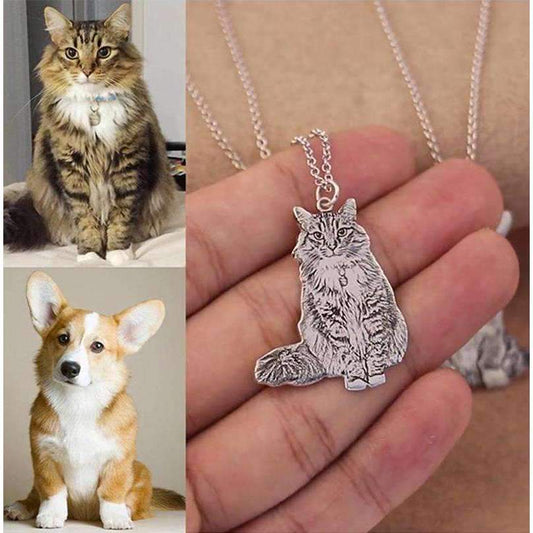Starting a cat cafe is more than just a business venture; it's a journey into creating a harmonious space where cat enthusiasts can mingle with feline friends. This article delves into the essential steps and business insights needed to launch a successful cat cafe, drawing inspiration from the experiences of entrepreneurs like Beth Drazak who have turned their passion for cats into a thriving sanctuary for both humans and animals.
Key Takeaways
- Understand the cat cafe concept fully, considering factors like animal welfare and customer experience, as demonstrated by Beth Drazak's venture.
- Choose a location that is accessible and conducive to both human and cat comfort, ensuring a seamless integration of the cafe and cat lounge areas.
- Comply with legal requirements meticulously, and prepare for extra scrutiny to maintain the highest standards of animal care and business operation.
- Develop a business model that balances profitability with the mission of cat rescue and adoption, possibly collaborating with local shelters as Drazak did.
- Engage with the community through strong branding, social media presence, and events to foster a culture of cat adoption and cafe patronage.
Laying the Groundwork for Your Cat Cafe

Understanding the Cat Cafe Concept
A cat cafe is a unique fusion of a traditional cafe with a space where visitors can interact with cats. The concept originated in Taiwan and has since spread globally, appealing to cat enthusiasts and those seeking a relaxing environment. The core idea is to provide a sanctuary for both humans and cats, where the presence of felines adds a therapeutic dimension to the cafe experience.
Cat cafes typically feature a range of felines that may be permanent residents or available for adoption. These establishments prioritize the well-being of the cats, ensuring they are socialized, healthy, and comfortable with human interaction. Visitors often pay an entry fee or reserve a time slot to enjoy the company of the cats, which helps maintain a controlled and serene atmosphere.
The success of a cat cafe hinges on understanding the delicate balance between creating a welcoming space for customers and a safe haven for cats. It's essential to recognize that the cafe is as much a home for the cats as it is a business.
While the concept may seem straightforward, the execution requires careful planning and a deep understanding of both feline behavior and customer service. Here are some key considerations for starting a cat cafe:
- Selecting a location that is accessible and inviting
- Designing an environment that caters to the needs of cats and humans
- Ensuring all cats are well-cared for, with regular health checks and vaccinations
- Managing the expectations of visitors to foster a respectful and enjoyable experience for all
Securing a Suitable Location
Finding the right location is crucial for the success of a cat cafe. It's not just about foot traffic and visibility, but also about the compatibility of the space with the unique needs of both cats and customers. Consider the demographics of the neighborhood and proximity to cat lovers and potential patrons.
When evaluating potential locations, keep in mind the following factors:
- Zoning regulations and compatibility
- Size and layout of the space
- Accessibility for customers
- Nearby competition or complementary businesses
Ensure that the location you choose has the potential for creating a relaxing and enjoyable atmosphere for your visitors, while also being a safe and stimulating environment for the cats.
Remember, the location of your cat cafe will set the tone for your entire operation. It's worth taking the time to find a place that aligns with your vision and business goals.
Navigating Legal Requirements and Paperwork
When starting a cat cafe, it's crucial to understand the legal landscape and ensure all necessary paperwork is in order. Securing the right documentation is essential for the smooth operation of your business and to avoid potential legal pitfalls.
Here are some key documents you may need:
- Business license
- Health and safety permits
- Liability waivers for customers
- Employment contracts
- Lease agreements
It's important to consult with legal experts to tailor these documents to your specific needs and local regulations.
Remember, each document serves as a safeguard for various aspects of your cat cafe, from customer interactions to employee management. Staying informed and compliant with local laws will help you establish a solid foundation for your cat cafe.
Designing a Cat-Friendly Space
Creating a space that is both appealing to humans and a paradise for cats requires thoughtful design and an understanding of feline behavior. Comfort and safety are paramount, ensuring that the cats have ample climbing structures, cozy nooks for napping, and plenty of interactive toys to stimulate their minds.
- Zones: Separate areas for play, rest, and dining.
- Materials: Use of cat-safe materials and easy-to-clean surfaces.
- Vertical Space: High shelves and perches for cats to observe their domain.
- Privacy: Private spots where cats can retreat if they feel overwhelmed.
A cat-friendly space is not just about aesthetics; it's about creating an environment where cats can exhibit natural behaviors and feel secure. This, in turn, enhances the customer experience, as guests can interact with happy, relaxed cats.
Remember to incorporate elements that cater to the cat's well-being, such as scratching posts and litter box enclosures that are strategically placed away from the dining and play areas to maintain hygiene. Regularly updating and rotating toys and features will keep the environment enriching for the cats and engaging for repeat customers.
Creating a Safe and Welcoming Environment

Ensuring Cat Health and Safety
The cornerstone of a successful cat cafe is the health and safety of the feline residents. To ensure this, a rigorous health protocol must be established, including regular veterinary check-ups, vaccinations, and preventive treatments for common ailments.
It is essential to create a space where cats can thrive, with access to clean water, nutritious food, and comfortable resting areas.
Cats in the cafe should be spayed or neutered to prevent unwanted litters and reduce aggressive behavior. A socialization and behavioral assessment program is also crucial to maintain a peaceful and engaging environment for both cats and visitors. Here's a quick checklist to keep in mind:
- Regular veterinary health checks
- Up-to-date vaccinations
- Spaying or neutering
- Behavioral assessments
- Adequate space for play and rest
By prioritizing the well-being of the cats, cat cafes can provide a delightful experience for customers while promoting responsible pet ownership and animal welfare.
Socialization and Behavioral Assessments
To ensure a harmonious environment in a cat cafe, socialization and behavioral assessments are crucial. These evaluations help to identify the temperament and sociability of each cat, which is essential for maintaining a safe and enjoyable atmosphere for both feline and human visitors.
- Initial Assessment: Upon arrival, cats should undergo a thorough behavioral assessment. This includes observing their reactions to various stimuli, such as human interaction, toys, and other cats.
- Ongoing Observations: Regular monitoring of each cat's behavior is important to detect any changes that may require intervention.
- Compatibility Matching: Cats are grouped based on compatibility to minimize stress and conflicts.
It is imperative to create a structured process for these assessments to ensure that all cats can thrive in the cafe setting.
Cats do not cope well with shelter life, which can lead to increased stress and behavioral issues. By implementing a robust socialization and behavioral program, cat cafes can provide a more suitable environment that caters to the well-being of the cats, thereby reducing the risk of negative outcomes highlighted in the research snippet.
Setting Up a Reservation and Ticketing System
A reservation and ticketing system is essential for managing the flow of visitors and ensuring a stress-free experience for both cats and customers. Implementing an online booking platform can streamline the process, allowing patrons to reserve their spot ahead of time. This system can also help in scheduling timely vet visits for cat health, a crucial aspect of running a cat cafe.
- Offer various ticket options, such as single visits, multi-pass deals, or memberships.
- Enable real-time availability updates to prevent overbooking.
- Provide clear information on cafe rules and cat interaction guidelines during the booking process.
By integrating a ticketing system, you can better control the number of guests interacting with the cats, thereby maintaining a calm and safe environment.
Remember to consider the customer experience when setting up your system. Personalized gifts for cat owners, such as shirts or blankets, can be offered as part of special promotions or loyalty rewards. This not only delights customers but also promotes your brand.
Managing Human-Cat Interactions
To ensure a harmonious environment in a cat cafe, it's crucial to manage interactions between humans and cats effectively. Proper guidelines must be established to maintain a safe and enjoyable experience for both parties. Here are some key points to consider:
- Educate visitors on how to approach and handle cats, emphasizing the importance of gentle and respectful interactions.
- Implement a set of rules that restrict certain behaviors, such as picking up cats or disturbing them while they sleep.
- Monitor interactions closely and have trained staff available to intervene if necessary.
It's essential to create a space where cats can retreat if they feel overwhelmed. This not only ensures the cats' well-being but also prevents any potential stress-related incidents.
Understanding the different types of interactions is also important. A study examined vocal, visual, and bimodal communication in cats, highlighting the need for a nuanced approach to human-cat communication within the cafe setting. By fostering a respectful and informed environment, cat cafes can thrive as a unique venue for cat lovers to engage with their favorite felines.
Building a Business Model for Success

Deciding on Services and Offerings
When starting a cat cafe, it's crucial to decide on the range of services and offerings that will define your business and attract customers. Consider the core experience you want to provide and how it aligns with responsible cat ownership, which involves understanding cat's needs and ensuring their safety and happiness. Offerings can range from simple cafe services to more elaborate experiences, such as cat yoga classes or art events.
- Cafe services (coffee, tea, pastries)
- Interactive experiences (cat yoga, painting with cats)
- Educational workshops (cat care, adoption information)
- Retail section (personalized cat-themed products)
It's essential to create a space that caters not only to human patrons but also to the feline residents. This means designing a cafe that is comfortable, engaging, and safe for cats, while providing a unique and memorable experience for visitors.
Remember to provide clear contact information, maintain an informative blog, and showcase your products effectively to engage with your community and support your business model.
Pricing Strategies for Sustainability
Developing a sustainable pricing strategy is crucial for the longevity of your cat cafe. Consider the cost of high-quality cat food, healthcare, and accessories when setting your prices. Proactive measures like providing scratching surfaces and regular vet visits can prevent costly damages and save money in the long run.
Budgeting for vet expenses and essential cat accessories is a non-negotiable aspect of running a cat cafe. Here's a simple breakdown of potential costs and pricing considerations:
- Cat care essentials: Litter, toys, beds, and grooming tools.
- Healthcare: Regular check-ups, vaccinations, and emergency funds.
- Food and treats: High-quality diet to maintain cat health.
- Operational costs: Rent, utilities, staff wages, and cafe supplies.
By carefully balancing these expenses with your revenue streams, you can set prices that are fair to customers and ensure the welfare of your feline friends.
Remember, your pricing strategy should reflect the unique experience you're offering. It's not just about the coffee or the pastries; it's about the joy of interacting with cats in a comfortable setting. Therefore, your prices should also account for the ambiance, cleanliness, and overall customer experience.
Incorporating Additional Revenue Streams
Diversifying your income is crucial for the sustainability of your cat cafe. Consider offering unique merchandise such as branded apparel, accessories, and cat-related products. This not only provides customers with a tangible memory of their experience but also serves as free advertising when they use or wear your merchandise in public.
- Merchandise Sales: T-shirts, mugs, tote bags
- Cat Adoption Fees: Partnering with local shelters
- Event Hosting: Birthday parties, cat yoga classes
- Workshops: Cat care, behavior training
By creating a multi-faceted revenue model, you can ensure a steady income flow even during slower business periods. Think beyond the traditional cafe model and explore opportunities that resonate with your brand and customer base.
Remember, it's not just about selling products or services; it's about enhancing the overall experience. Hosting events and workshops can also strengthen your community ties and position your cafe as a hub for cat lovers.
Adoption Facilitation and Partnerships
Cat cafes not only offer a unique experience for visitors but also serve a noble purpose in the community. By partnering with local rescue organizations, cat cafes play a crucial role in supporting cat rescue efforts. They provide much-needed exposure and promotion for cats that are looking for their forever homes. This symbiotic relationship benefits both the cafes and the rescue groups, leading to increased adoption rates.
Cat cafes act as a bridge between potential adopters and rescue cats, simplifying the adoption process and creating a seamless experience for both parties.
To maximize the impact of these partnerships, cat cafes can implement a variety of strategies:
- Establishing regular adoption events and meet-and-greets.
- Creating profiles for each cat that include their story and personality traits.
- Offering discounts or incentives for cafe visitors who adopt.
- Collaborating with local businesses to sponsor cat care supplies or adoption fees.
These efforts not only help cats find loving homes but also foster a sense of community involvement and shared responsibility towards animal welfare.
Marketing and Community Engagement

Developing a Strong Brand Identity
A strong brand identity is the cornerstone of any successful cat cafe. It's not just about a logo or a color scheme; it's about creating a memorable experience that resonates with your target audience. Your brand should encapsulate the unique personality of your cafe and convey the warmth and comfort that customers will associate with their visits.
- Research your target market to understand their preferences.
- Develop a consistent theme that aligns with your cafe's atmosphere.
- Choose a color palette and design elements that reflect the cafe's character.
- Craft a compelling brand story that connects with customers on an emotional level.
A well-crafted brand identity goes beyond aesthetics; it's a strategic tool that helps build customer loyalty and differentiates your cafe from competitors.
Remember, your brand identity is not static; it should evolve as your business grows and as customer preferences change. Keep an eye on trends and feedback to ensure that your brand remains relevant and appealing.
Leveraging Social Media and Online Platforms
In today's digital age, establishing a robust online presence is crucial for the success of any business, including a cat cafe. A user-friendly website and consistent branding across various social media channels are the cornerstones of digital marketing. Engaging with your audience through these platforms can create a sense of community and belonging among cat enthusiasts.
- Create a comprehensive social media strategy that includes regular posts, live sessions, and interactive content.
- Encourage customers to share their experiences and photos, effectively leveraging user-generated content.
- Utilize analytics tools to track engagement and refine your approach based on customer feedback and behavior.
By fostering an online community, you not only enhance your visibility but also build lasting relationships with your patrons, which can lead to increased loyalty and word-of-mouth referrals.
Remember, the goal is to not just attract followers, but to cultivate a space where cat lovers can connect and share their passion. With the right strategy, social media can be a powerful tool in driving traffic to your cat cafe and creating a buzz around your brand.
Hosting Events and Collaborations
Hosting events and collaborations at your cat cafe can significantly enhance community engagement and create memorable experiences for your patrons. Celebrate the joy of cats with themed events such as custom art exhibitions, gift exchanges, and crafting parties that revolve around cat-inspired designs. These gatherings not only share the love for felines but also foster a sense of belonging among cat enthusiasts.
By organizing events, you're providing a platform for local artists and creators to showcase their work, which can lead to mutually beneficial partnerships. This collaboration can extend to local businesses and non-profits, offering a unique opportunity to support community initiatives while driving traffic to your cafe.
Consider the following ideas for your event calendar:
- Cat adoption days in partnership with local shelters
- Educational workshops on cat care and behavior
- Cat-themed holiday celebrations
- Collaborative events with local businesses and artisans
Remember, the key to successful events is in the planning and execution. Ensure that each event is well-publicized, cat-friendly, and aligns with your brand's values.
Fostering a Cat-Loving Community
Creating a cat-loving community is essential for the success of a cat cafe. Engage with your customers by providing them with resources and activities that cater to their love for cats. For instance, offer a guide for cat owners with allergies, providing tips to manage allergies and create a comfortable living space. This personalized advice can make your cafe a hub for cat enthusiasts seeking solutions to common challenges.
Organize regular events that bring cat lovers together. These could include cat-themed trivia nights, educational talks, or even cat yoga sessions. Here's a simple list of event ideas to get started:
- Cat adoption fairs
- 'Meet the Cats' social hours
- Cat care workshops
- Fundraisers for local shelters
Remember, the goal is to create a space where people feel connected not just to the cats, but to each other. Encourage your patrons to share their own cat stories and experiences, fostering a sense of community and belonging.
By nurturing a cat-loving community, your cafe will become more than just a business; it will be a cherished part of the neighborhood, a place where people and cats alike can thrive.
Overcoming Challenges and Ensuring Longevity

Addressing Public Misconceptions
One of the key challenges in starting a cat cafe is addressing public misconceptions. It's crucial to educate the public about the nature of cat cafes, which are not just about coffee and cats, but also about animal welfare and community. Misconceptions can range from concerns about allergies and hygiene to the welfare of the cats.
To counter these misconceptions, proactive communication and transparency are essential. Share information about the measures taken to ensure a clean environment and the health and happiness of the cats.
Here are some common misconceptions and clarifications:
-
Misconception: Cat cafes are unhygienic.
Clarification: Regular cleaning schedules and air purification systems maintain hygiene. -
Misconception: Cats are stressed by the cafe environment.
Clarification: Cats are carefully selected for their sociability and comfort with humans. -
Misconception: Cat cafes exploit animals.
Clarification: Ethical cat cafes prioritize animal welfare and often partner with rescues to facilitate adoptions.
By addressing these misconceptions head-on, cat cafe owners can build trust with their customers and create a more informed and supportive community.
Maintaining High Standards of Hygiene
Maintaining high standards of hygiene is crucial in a cat cafe, where the health and comfort of both the cats and customers are paramount. Regular cleaning and disinfection of the space are essential to prevent the spread of diseases and ensure a pleasant environment for everyone. This includes daily tasks such as sweeping and mopping floors, wiping down surfaces, and washing bedding and toys.
To manage these tasks effectively, a structured cleaning schedule should be implemented. Here's an example of what that might look like:
- Morning: Refresh water bowls, clean litter boxes, and tidy up the cat play area.
- Afternoon: Check and clean any food and drink areas, conduct a quick sweep for hair and debris.
- Evening: Deep clean litter boxes, sanitize all surfaces, and prepare the space for the next day.
It's important to create a culture of cleanliness among staff and volunteers. Everyone should be aware of their role in maintaining hygiene and the impact it has on the wellbeing of the cats and the customer experience.
Investing in the right cleaning equipment and supplies is also a key factor. High-quality, pet-safe disinfectants and deodorizers can make a big difference in managing odors and maintaining a clean space. Remember, a clean cafe is a welcoming cafe.
Handling Criticism and Extra Scrutiny
When starting a cat cafe, it's essential to be prepared for criticism and extra scrutiny. This can come from various sources, including customers, local businesses, and animal welfare organizations. To address these challenges effectively, consider the following steps:
- Educate the public about common cat owner mistakes and the importance of responsible pet ownership.
- Highlight the joy of having cats as pets and how your cafe promotes feline well-being.
- Develop a transparent communication strategy to address concerns and feedback.
- Maintain a record of health and safety practices to reassure skeptics.
It's crucial to remain open to feedback while standing firm on your commitment to animal welfare and customer satisfaction. By doing so, you'll not only improve your business but also advocate for the well-being of your feline companions.
Remember, every business faces challenges, but how you handle them can set you apart. Stay proactive, be patient, and always strive for excellence in both customer experience and animal care.
Planning for Future Growth and Expansion
As your cat cafe matures, planning for future growth and expansion is crucial to sustain success. This involves not only scaling up your operations but also staying attuned to the evolving needs of your feline companions and human patrons. Cat owners can relate to the unique experiences of owning a cat, from their independent nature to understanding their unspoken language. Explore the joys and challenges of feline companionship.
To ensure longevity, consider diversifying your offerings. This could include introducing new products, hosting themed events, or even expanding to multiple locations. Regularly assess the market and adapt your business model accordingly.
Here are some steps to consider for strategic growth:
- Conduct market research to identify new trends and customer preferences.
- Reinvest profits into the business to fund improvements and innovations.
- Build a strong team that shares your vision and can help manage increased demand.
- Collaborate with local shelters and rescue organizations to support community initiatives.
Remember, a successful expansion requires careful planning and a deep understanding of both your business and your clientele.
Conclusion
Starting a cat cafe is not just a business venture; it's a labor of love that combines entrepreneurship with a passion for feline welfare. As we've seen from the journey of Beth Drazak and her Marcie's Angels Cat Café, it requires dedication, research, and a willingness to adapt. From fostering kittens to creating a safe haven for rescued cats, the cat cafe model offers a unique opportunity to promote animal adoption and provide a cozy space for cat enthusiasts. While challenges such as public perception and regulatory compliance are part of the process, the rewards of running a cat cafe are immeasurable, both in the joy it brings to customers and the positive impact on the lives of cats. Whether you're a seasoned businessperson or a cat lover looking to make a difference, the insights shared in this article can guide you on the path to opening your own cat cafe and contributing to a growing community of cat-friendly spaces.
Frequently Asked Questions
What inspired the creation of Marcie's Angels Cat Cafe?
Beth Drazak was inspired to start Marcie's Angels Cat Cafe as a way to provide a safe space for rescued cats and to encourage more adoptions amid the overcrowding of animal shelters. The cafe is named after her former cat of 11 years, Marcie.
What is unique about the cat cafe concept?
Cat cafes offer a unique experience where customers can enjoy a relaxing environment with cats. Marcie's Angels Cat Cafe focuses on rescue cats from a local shelter, allowing visitors to play with the cats and potentially adopt them.
Will there be food and drinks served at the cat cafe?
Initially, the cat cafe started with very limited hours and no food or drink to keep it simple and maintain hygiene. While some cat cafes don't serve hot drinks due to safety concerns, the offerings may evolve over time.
How does the reservation and ticketing system work?
Customers need to purchase tickets and reserve a time slot to interact with the cats at the cafe. This ensures a controlled environment for both the cats and the visitors.
How are the cats cared for at Marcie's Angels Cat Cafe?
All cats at the cafe are fully vetted, spayed or neutered, and receive all the appropriate shots. They also undergo socialization and behavioral assessments to ensure they are suitable for interaction with visitors.
Can visitors adopt cats from the cafe?
Yes, Marcie's Angels Cat Cafe allows customers to play with rescue cats and apply to bring them home. The cats come from Protectors of Animals in East Hartford, where Beth Drazak has been a volunteer.
